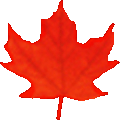
Common menu bar links
Institutional Links
-
Translation Bureau
Language Portal of Canada
-
TERMIUM Plus®
-
Index N
- namable
- nameable
- names of Canadian universities (Linguistic recommendation from the Translation Bureau)
- names of government departments (Linguistic recommendation from the Translation Bureau)
- nano-
- nas-
- naso-
- National Assembly
- National Capital Region
- nay
- NB
- N.B.
- NDT
- near
- necessary prerequisite
- need
- needs
- neither … nor
- neo-
- Net (Linguistic recommendation from the Translation Bureau)
- neuro-
- never used to
- New Brunswick
- Newfoundland and Labrador
- Newfoundland Daylight Time
- Newfoundland Standard Time
- new French spelling (Linguistic recommendation from the Translation Bureau)
- new innovation
- new recruit
- Nfld.
- NL
- N.L.
- no
- noci-
- noct-
- nocti-
- non-
- nona-
- non-flammable
- non-inflammable
- non sequitur
- Northwest Territories
- Norwego-
- notify
- not quite
- noun
- noun clause
- noun phrase
- noun used as an adjective
- Nova Scotia
- Nowel
- NS
- N.S.
- NST
- NT
- NU
- nulli-
- number
- numbers: age
- numbers: clarity
- numbers: comparative and inclusive numbers
- numbers: consistency
- numbers: decimal fractions
- numbers: governmental and historical designations
- number sign
- numbers in compound adjectives
- numbers: market quotations
- numbers: mathematical usage
- numbers: money
- numbers: names of organizations
- numbers: plurals
- numbers: quantities and measures
- numbers: ratios
- numbers: reference numbers
- numbers: Roman numerals
- numbers: round numbers
- numbers: spelled-out numbers
- numbers starting a sentence
- numbers used as nouns
- numbers: votes and scores
- number symbol
- numeric date
- Nunavut
- N.W.T.
Proactive Disclosure
Important notice
Writing Tips has been archived and won’t be updated before it is permanently deleted.
For the most up-to-date content, please consult Writing Tips Plus, which combines content from Writing Tips and The Canadian Style. And don’t forget to update your bookmarks!
Search and Functionalities Area
new French spelling (Linguistic recommendation from the Translation Bureau)
[The same content is available in French in the article NOUVELLE ORTHOGRAPHE (RECOMMANDATION LINGUISTIQUE DU BUREAU DE LA TRADUCTION).]
The purpose of this recommendation is to inform the federal public service of the Translation Bureau’s position on the new French spelling.
Position
The Translation Bureau considers both the new and the traditional French spelling to be correct.
What is it?
The new French spelling is an initiative of the Conseil supérieur de la langue française (France) to simplify the French language and correct some anomalies. It involves a set of rules (in French only) and a list of about 2 000 words (5 000, if you include rare and technical words).
Examples of New Spelling
| New spelling | Change |
|---|---|
| aigüe, ambigüe | diaeresis shifted from the ë to the ü |
| gout, boite, connaitre, apparaitre, trainer, bruler | circumflex accent deleted on the î and û |
| exéma, nénufar, ognon, relai | letters replaced or one letter deleted |
| bonhommie, charriot, combattivité, boursoufflé | consonant added or deleted to ensure uniformity with bonhomme, charrue, battre and soufflé |
| deux-mille-trois-cent-cinquante-deux | hyphen added between all words that make up a number |
| contrappel, entretemps | hyphen deleted in compounds beginning with contre- and entre- |
| un cure-ongle, des cure-ongles; un après-midi, des après-midis | in the second element of a compound noun: letter s deleted in the singular or letter s added in the plural (as opposed to the current spelling: un cure-ongles, des après-midi) |
Findings
- Many recognized reference works and spell-checkers have accepted the new French spelling, either in whole or in part.
- Many organizations and bodies consider the new spelling correct:
- Conseils supérieurs de la langue française (France and Quebec)
- Académie française (France)
- Office québécois de la langue française
- the ministries of education of France, Belgium and Switzerland
- the Ministère de l’Éducation of Quebec, the Ministry of Education of Saskatchewan, the Department of Education of New Brunswick and Alberta Education
References
- GQMNF, the Groupe québécois pour la modernisation de la norme du français
- RENOUVO, the Réseau pour la nouvelle orthographe du français (made up of associations from France, Belgium, Switzerland and Haiti, and the GQMNF from Québec)
- List of new French spellings:
- complete list of about 5 000 words, including rare and technical words: Grand vadémécum de l’orthographe moderne recommandée : cinq millepattes sur un nénufar (RENOUVO, 2009)
- abridged list of about 2 000 words: Le millepatte sur un nénufar – Vadémécum de l’orthographe recommandée (RENOUVO, 2005)
- General information:
Additional information
- The article Le point sur la nouvelle orthographe by Fanny Vittecoq, in Language Update 7, no. 1 (2010): 39. (Reprinted dans les Chroniques de langue; available in French only)
- The article Nouvelle orthographe : Un sujet bien d’actualité by Georges Farid, in Language Update 7, no. 1 (2010): 12. (Reprinted dans les Chroniques de langue; available in French only)
- The article Aimez-vous la nouvelle orthographe? by Jacques Desrosiers, in Language Update 34, no. 4 (2001): 13. (Reprinted dans les Chroniques de langue; available in French only)
© Public Services and Procurement Canada, 2025
TERMIUM Plus®, the Government of Canada's terminology and linguistic data bank
Writing tools – Writing Tips
A product of the Translation Bureau


